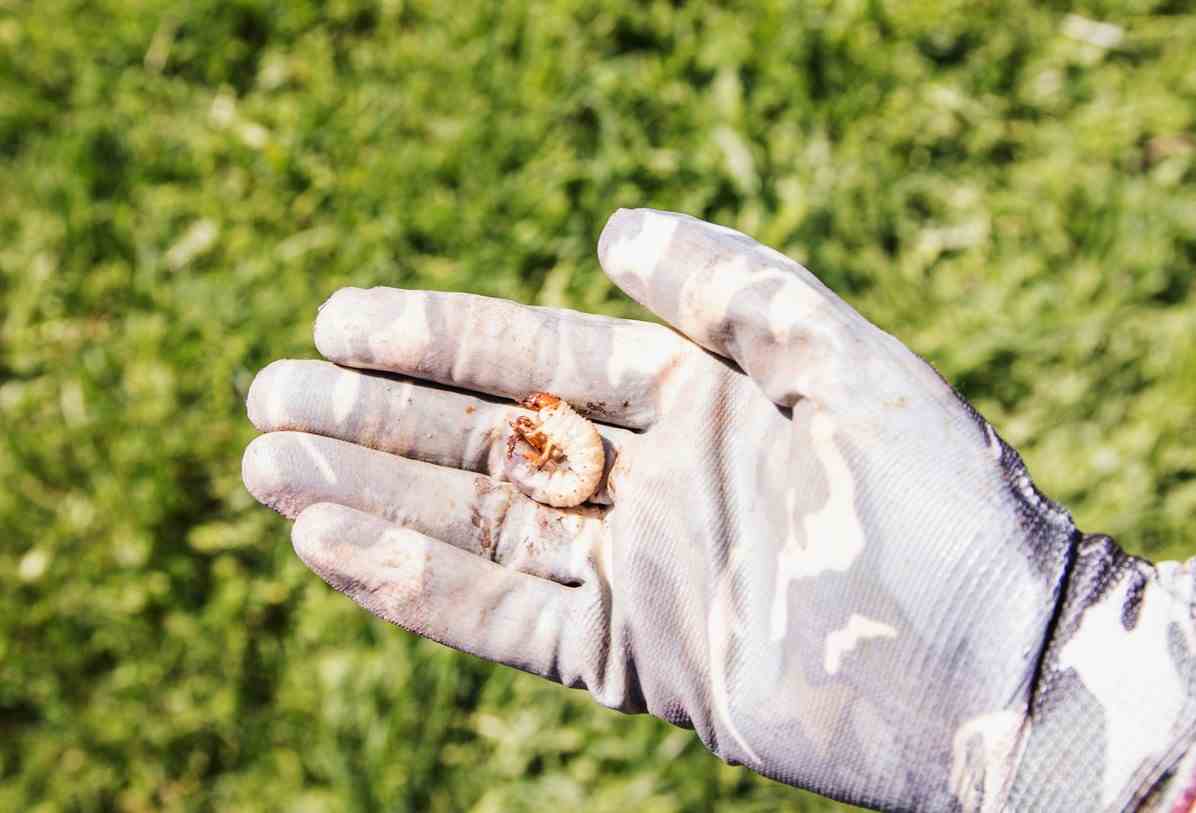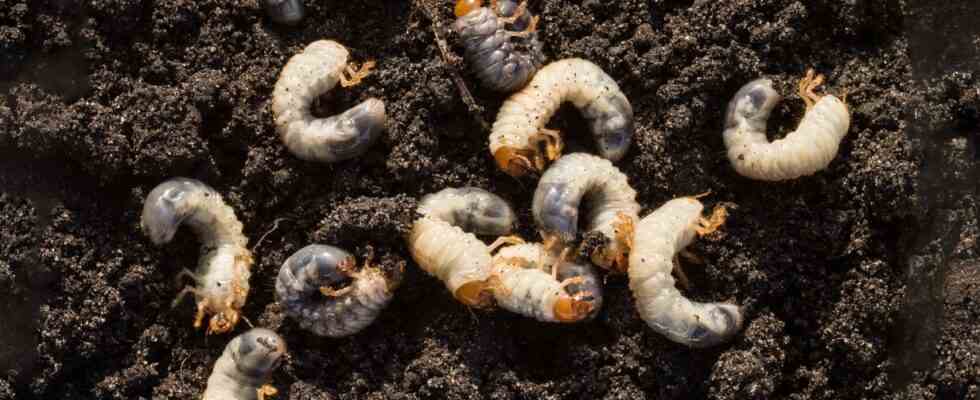Let’s get to know the cockchafer
Nocturnal beetles, beetles can be recognized by their noisy flight at the end of the day. They fall into different species, but the ones we encounter most frequently in our gardens are the common cockchafer and the horticultural chafer. Adults, they feed on wood and leaves without causing irreversible damage, but the same cannot be said when they are in the larval state!
Indeed, at this stage, they are very voracious and pose real problems because they then attack the roots up to destroy plantations. You should know that the adult beetle lives only 4 to 6 weeks: the male beetle dies after the sexual act, the female beetle after laying eggs. On the other hand, the larvae of certain species, such as the common beetle, live 3 to 4 years in the ground before pupation and metamorphosis into a beetle, and the start of a new cycle. So you understand that during all these years, they have time to commit quite a few misdeeds.
The common cockchafer
It is recognized by its mahogany-brown elytra which may be striated and to its predominantly red antennae. Once adult, it can reach a length of 3 cm for 1.5 cm wide. It lives mainly in hedges and trees. At the time of laying, the females lay about sixty eggs in warm, loose soil, like that of the vegetable garden, generally about twenty centimeters deep.
The larvae that hatch from these eggs are rather yellowish and ringed. They are up to 4 cm long and are characterized by 3 pairs of long legs at the front of the body.
The horticultural chafer
Also known as garden cockchafer, it is smaller and only 1 cm long. Its elytra have a reddish-brown color, almost red. As for its thorax, its legs and its antennae, they are black with some green reflections. It can be spotted in the grass, in orchards, on the edge of forests, etc. The females lay eggs in the ground between 5 and 20 cm deep, between the end of June and the beginning of July.
The eggs will hatch between 2 to 3 weeks later. The larva measures 1.5cm max and is milky white. It is recognized by its arched position when it remains motionless. It then feeds on the roots of grasses, cereals, and even legumes. In this species, the cycle takes place over one year, two at most.
Differentiate the cetonia larva from the cockchafer larva
Be careful to distinguish between these two types of larvae to do not destroy those of cetonia instead of those of cockchafer. Here is why: if those of the beetle are harmful, those of rose chafer are useful in the garden and should therefore be preserved. Indeed, the latter feed exclusively on dead plants and therefore present no danger to your crops. To tell them apart:
- The cetonia larva is whiter than the cockchafer larva.
- She has short legs while those of the cockchafer are long.
- The the head of the rose chafer is smaller and its hind part is wider than its head.

The damage caused
The adult beetle does not cause significant damage in the garden. Admittedly, it feeds on the leaves of trees and shrubs, but not enough to endanger your plants. Those are larvae that are problematic, especially in the case of species that take 3 years to mature. If the larva does not cause damage during the winter, since it hibernates, in the spring, it will feed so voraciously on the roots of your plants that they will wither.
The root vegetables are particularly affected by the common cockchafer, but also lettuces, strawberries, flower beds. For its part, the garden beetle will prefer the roots of grasses, cereals or legumes. The larvae can also attack the lawn and you may then notice areas where the grass turns yellow.
How to fight against white grubs?
To preserve your plantations by getting rid of beetles, there are different solutions. Either way, prefer biological solutions in order to preserve the environment, but also your health.
Focus on biodiversity
In the event of a beetle invasion, you face a biodiversity imbalance. You must therefore seek to promote his recovery. To do this, you should know that the white grub has many natural predators including birds, such as tits, starlings, crows, bats, but also hedgehogs, moles and mole crickets.
Here’s how to attract these white grub predators:
- Opt for a diversified hedge which will allow you to welcome many birds on your land.
- Install Wood pile that might attract a hedgehog.
- Leave a fallow area.
- Accept the presence of molesbecause they are very effective allies when it comes to cleaning the floor.
- Avoid the use of pesticides as much as possibleeven biological, because they contribute to the destruction of the balance which is established in your garden.
Fighting beetle larvae in the vegetable garden
Here is what is effective to do:
- As soon as you notice that one of your plants is wilting abnormally, do not hesitate to dig it up and check the land around to find the culprit. If you spot a beetle larva, destroy it.
- When working the soil, hand pick any larvae you findthen destroy them or throw them on the ground, birds or other predators will come to take care of them.
- The fact of hoe the earth helps put grubs in the sight of their predators.
- Prefer copious, but spaced out wateringsbecause the larvae like loose, moist soil and by doing so, you will create an environment less conducive to their development.
- If you have chickens, do not hesitate to offer them a short stay in your vegetable garden during the winter, when you have no crops that they could destroy. They will take care of cleaning the area.
Prevent the presence of cockchafer larvae in the lawn
To protect your lawn, avoid scarifying it in summer, because then you would make it a good place to spawn. Likewise, it is recommended not to mow too close, it is better to leave the grass at a height of about 10 centimeters.
Use plants
Starting in the spring, you can plant one or more seedlings of fleshy-leaved bergenia. They will act as a trap by attracting larvae, which will preserve other crops. In the fall, it is then possible to drown the plant and its hosts or burn it. This will eliminate many of the grubs in this area.
Nematodes or fungus
The nematodes are ae biological solution highly effective in the event of excessive infestation, but also the Beauveria brongniartii which is a particular fungus. These are 2 products that will destroy the larvae. Said to be selective, they have no direct effect on other plants, animals or other insects.
- Beauveria brongniartii mushroom: the technique consists of incorporating it into the soil in the spring to allow it to attack the white grubs and it is sure that they will not resist it!
- Nematodes : you just have to dilute the contents of the sachet of microscopic parasitic worms in water, according to the instructions provided, then water your crops with this mixture which will act in just one week.

